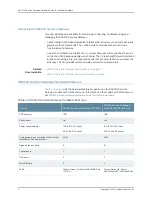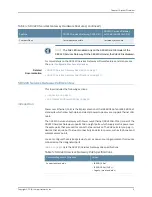
Table 9: SRX220 Services Gateway Built-In Hardware Interfaces
Description
Specifications
Interface Type
The Gigabit Ethernet ports can
be used as follows:
•
To function as front-end
network ports.
•
To provide LAN and WAN
connectivity to hubs,
switches, local servers, and
workstations.
•
To forward incoming data
packets to the device.
•
To receive outgoing data
packets from the device.
•
To connect power devices
to receive network
connectivity and electric
power (PoE functionality)
(for the PoE model of the
SRX220 Services Gateway).
Eight ports that:
•
Are labeled
0/0
through
0/7
on the front panel.
•
Use RJ-45 connectors.
•
Provide link speeds of
10/100/1000 Mbps.
•
Operate in full-duplex and
half-duplex modes.
•
Support flow control.
•
Support autonegotiation
and autosensing.
All Gigabit Ethernet ports
support Power over Ethernet
on the PoE model of the
SRX220 Services Gateway.
Gigabit Ethernet
The USB ports can be used as
follows:
•
To support a USB storage
device that functions as a
secondary boot device in
case of CompactFlash
failure on startup (if the
USB storage device is
installed and configured).
NOTE:
You must install and
configure the USB storage
device on the USB port to
use it as a secondary boot
device. Additionally, the
USB device must have
Junos OS installed.
•
To provide the USB
interfaces that are used to
communicate with many
types of USB storage
devices supported by
Juniper Networks.
Contact your Juniper Networks
customer service
representative for more
information.
Two ports that:
•
Function in full speed and
high speed.
•
Comply with USB revision
2.0.
Universal Serial Bus (USB)
Copyright © 2016, Juniper Networks, Inc.
14
SRX220 Services Gateway Hardware Guide for H Model Numbers
















































